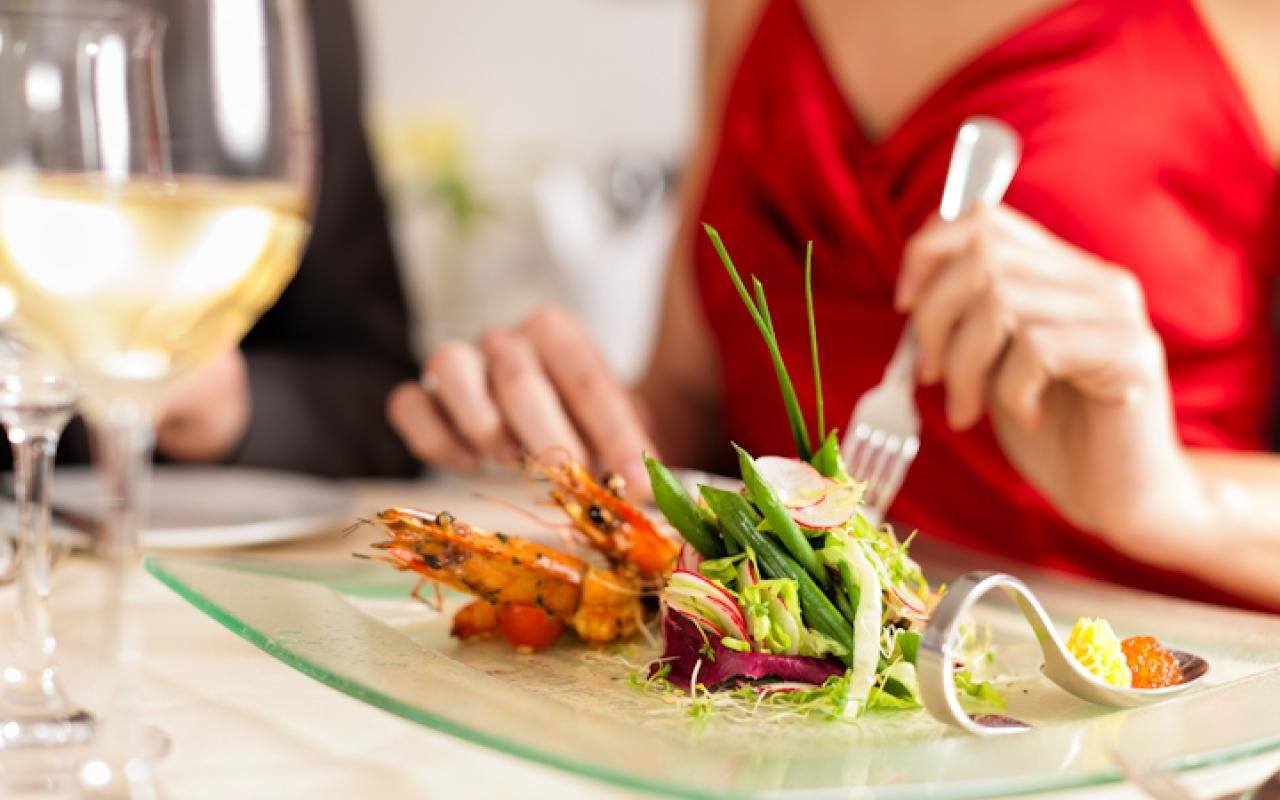There’s no need to sacrifice your waistline with these tips
If you’re following a health regime or specific diet, eating out at a restaurant or café can seem scary, but there’s no need to fear a food coma, bloated belly and excessive calories just because you aren’t preparing your own food. Just follow these tips from FIT.
Choose your appetisers wisely
Many people make the mistake of filling up on appetiser foods prior to the main meal. Bread, chips with dips and salted nuts are commonly served at the table before you even select your meals from the menu. Eating these will quickly add up your calories, sodium and refined carbohydrates. Skip the breadbasket and instead go for a few olives, which are full of heart healthy fats and relatively low in calories. Remember; don’t just chow down for the sake of it. Sip slowly on a drink and enjoy some conversation, there will be plenty of food to be enjoyed at the main course.
Read the menu thoroughly before you order
It’s easy to read an old favourite, albeit less-than-healthy menu item and order it before you can catch your breath. To avoid this, make a point of taking a moment to pause and observe what’s on the menu. Once you’ve taken in the different foods and dishes on offer, hone in on your favourites based on what will give you pleasure to eat, yet still have you feeling great afterwards.
Foods to avoid for the sake of your waistline are creamy sauces, white pasta, white bread and fried foods.
Know the good, the bad and the ugly
Understand what the healthy options, average options and the downright terrible options are, and then select accordingly! Your most obvious friends are the salads and vegetable dishes, which you can usually order as sides. Suggest getting a selection for the table and fill at least half your plate with these. Anything green is particularly good! Just be careful of creamy dressings and heavy butter, as this can quickly add up calories and saturated fat.
Next, select a main based around a piece of high quality protein such as seafood, chicken or grass-fed steak. Condiments and sauces are often unhealthy, so ask for it on the side and use only a small amount or forgo it completely if you can. Choosing tomato-based sauces is always better than their creamy counterparts.
Remember your portion sizes
Don’t get sucked in to the popular mentality that you should eat everything on your plate. Instead, take a breath and pause before scoffing it all down. Keeping your portion sizes under control is a great way to prevent excessive calories and that horrible “stuffed” feeling post-meal. As a general rule of thumb, have unlimited green vegetables and salads, good carbohydrates to about the size of a tennis ball, and a protein serving about the size of your palm.
Eat mindfully
Make sure you eat your meal mindfully, rather than scoffing it down. Savour the textures and flavours of the foods and enjoy each bite. A study done from Cornell University on the eating behaviours of slimmer people revealed that thin diners took about 15 chews per mouthful, which is 3 times greater than heavier diners. Brian Wansink, who led the experiment, says a great way to accomplish his is to ‘put your fork down between bites, even just for a second.” By chewing your food properly, you will be inclined to eat less overall, as the brain will have more time to receive the message from your stomach that it is full (which takes about 20 minutes). You will also get greater pleasure from your meal and allow for better digestion of the food itself.


